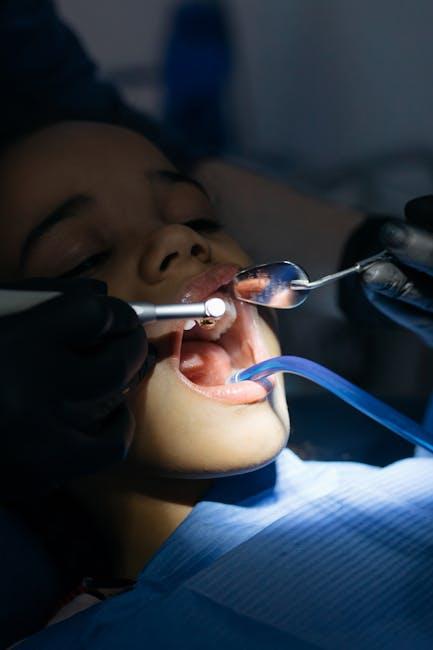1 in 3 Kids Has Dental Problems, Poll Finds – U.S. News & World Report
Recent findings from a comprehensive poll reveal a sobering truth: one in three children in the United States struggles with dental problems. This statistic has generated widespread concern among parents, healthcare providers, and policymakers alike. With dental health playing a vital role in children’s overall well-being, it’s essential to understand the underlying causes, implications, and steps toward prevention. This article delves into the alarming data, explores practical solutions, and offers expert advice to help keep your child’s smile bright and healthy.
Understanding the Poll and Its Key Discoveries
The poll, highlighted by U.S. News & World Report, surveyed thousands of parents across various states to gather data on children’s oral health. The findings indicate:
- 33% of children experience dental problems such as cavities, tooth decay, or gum issues.
- Children from lower-income families are disproportionately affected, with rates as high as 50% in some communities.
- Access to dental care remains a significant barrier, particularly in rural and underserved urban areas.
- Early childhood cavities often go untreated, leading to school absences and speech development issues.
What Counts as Dental Problems in Kids?
When we talk about dental problems in children, it encompasses a range of conditions including:
- Cavities (Dental Caries): The most common chronic disease in children, caused by bacteria damaging tooth enamel.
- Gingivitis: Mild inflammation of the gums that can progress if untreated.
- Tooth Sensitivity: Discomfort from temperature changes or sugary foods.
- Malocclusion: Misalignment of teeth affecting chewing and speech.
Why Are Children’s Dental Problems So Prevalent?
Several factors contribute to the high incidence of dental problems among kids. Understanding these can empower parents and caregivers to take proactive steps.
Key Causes
- Poor Oral Hygiene Habits: Inconsistent brushing and flossing routines lead to plaque buildup.
- High Sugar Intake: Frequent consumption of sugary snacks and beverages fuels tooth decay.
- Limited Access to Dental Care: Financial, geographic, and systemic barriers that delay preventive visits.
- Lack of Parental Awareness: Misconceptions about baby teeth and dental visits.
Dental Health Statistics: A Closer Look
| Age Group | Prevalence of Dental Problems | Primary Contributing Factor |
|---|---|---|
| 2-5 years | 27% | Early childhood caries due to prolonged bottle use |
| 6-12 years | 35% | Poor brushing habits and diet |
| 13-18 years | 33% | Orthodontic issues and gum disease onset |
Benefits of Early Dental Care and Hygiene
Engaging in good oral health habits early on offers several long-term benefits that extend far beyond just healthy teeth:
- Improved Overall Health: Poor dental health is linked with infections and chronic illnesses.
- Enhanced Learning: Healthy teeth prevent pain-related absences and concentration issues.
- Boost in Self-Confidence: A bright smile fosters social and emotional development.
- Lower Healthcare Costs: Preventive care reduces the need for costly dental procedures later.
Practical Tips for Parents to Prevent Dental Problems in Kids
Parents play a pivotal role in ensuring their children’s dental wellness. Here are effective tips to incorporate into everyday routines:
- Establish a Brushing Routine: Brush teeth twice a day using fluoride toothpaste and supervise children until age 7.
- Limit Sugary Foods and Drinks: Replace sugary beverages with water and encourage healthy snacks.
- Schedule Regular Dentist Visits: The American Academy of Pediatric Dentistry recommends dental exams starting at age 1.
- Use Dental Sealants: Ask your dentist about sealants to protect molars from decay.
- Lead by Example: Parents demonstrating good dental hygiene encourage children to follow suit.
Case Study: Improving Dental Health in a Community Setting
In a small rural town in Ohio, a community dental program was launched after local data aligned with the national poll’s concerning findings. Within two years:
- School-based dental screenings identified children with untreated cavities.
- A mobile dental clinic provided preventive care and treatment directly at schools.
- Parental workshops raised awareness about the importance of early dental care.
Result: A 40% drop in new dental problems among participating children, improved school attendance, and positive feedback from families.
Firsthand Experience: A Parent’s Perspective
Emily, mother of two, shares her journey after learning about her 5-year-old son’s multiple cavities:
“I used to think baby teeth didn’t matter much since they fall out eventually. But after his doctor explained the risks and consequences, I changed our routine completely. We brush, floss, and limit sweets, and his last dental check was cavity-free. It’s been a huge relief and a big learning experience for our whole family.”
Conclusion: Taking Action for a Healthy Smile
The revelation that 1 in 3 kids has dental problems serves as a crucial wake-up call. Early intervention, consistent dental hygiene habits, and increased access to care can dramatically reduce this number. Parents, communities, and healthcare systems must work together to safeguard children’s oral health — because a healthy smile is the foundation for a healthy life.
Remember: Start dental visits early, embrace good habits, and advocate for your child’s dental needs. Together, we can turn these troubling statistics around and ensure every child enjoys a bright, pain-free smile.


